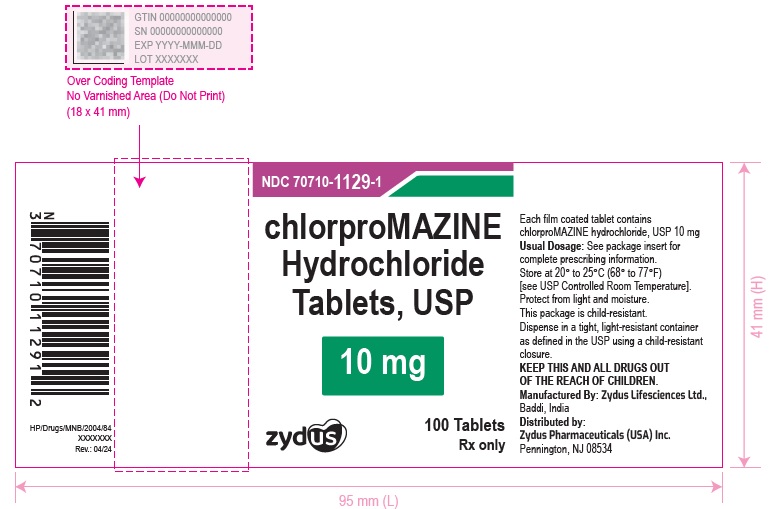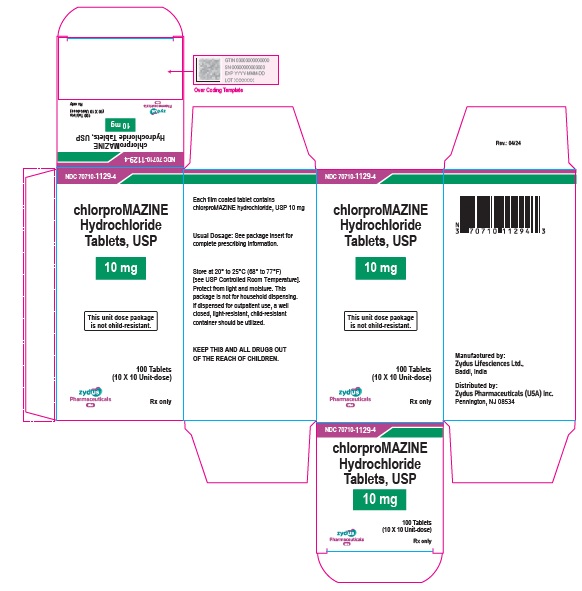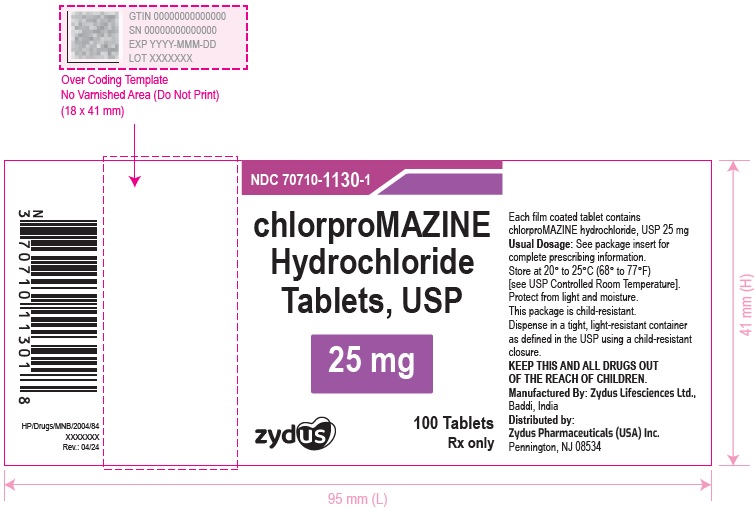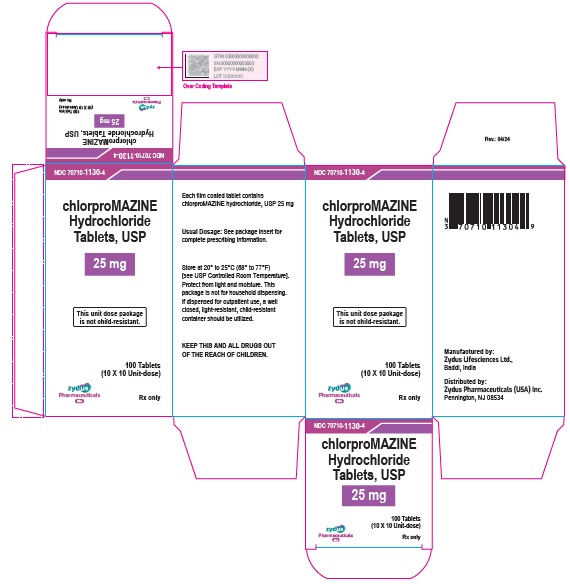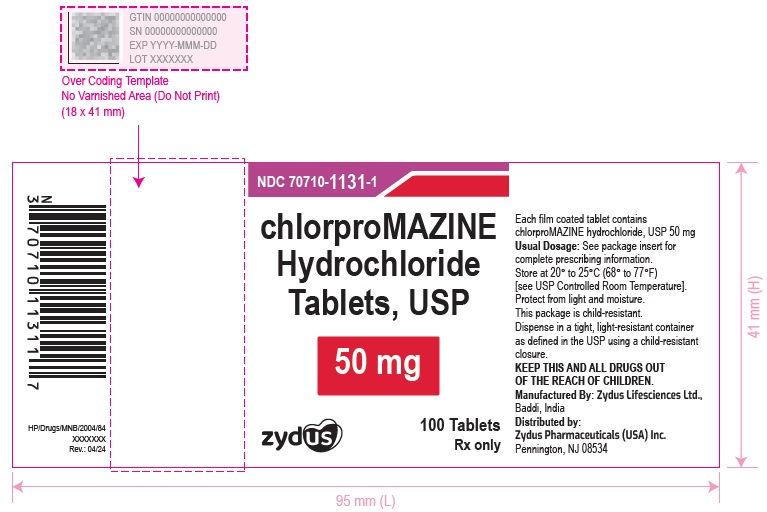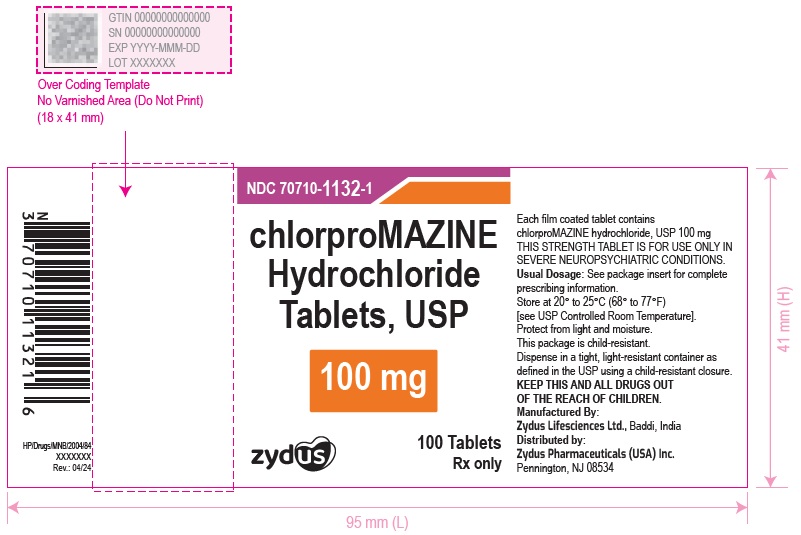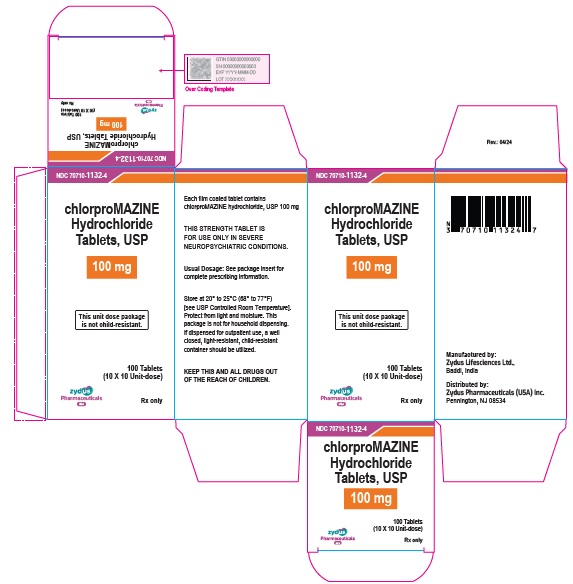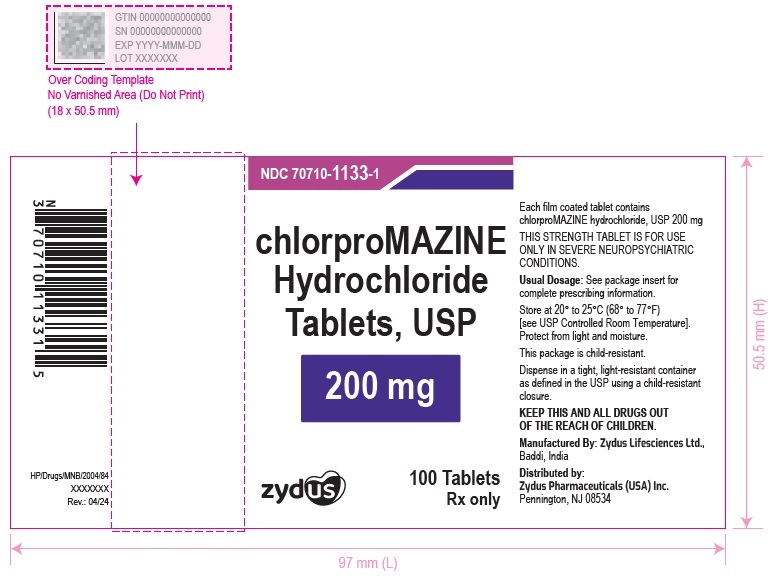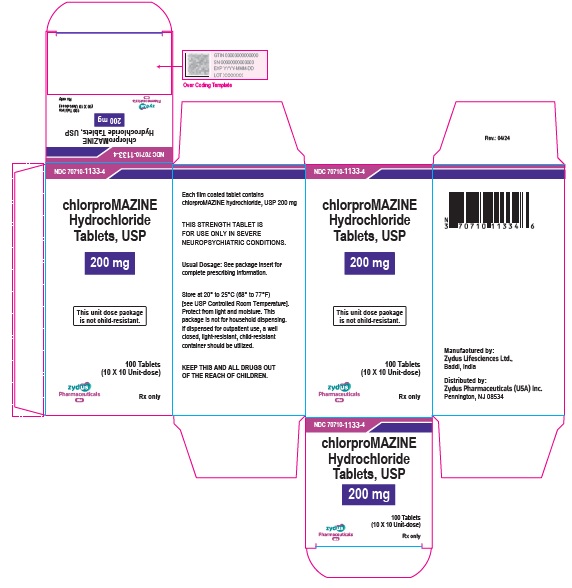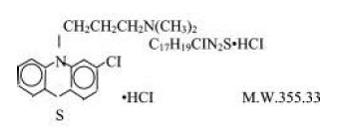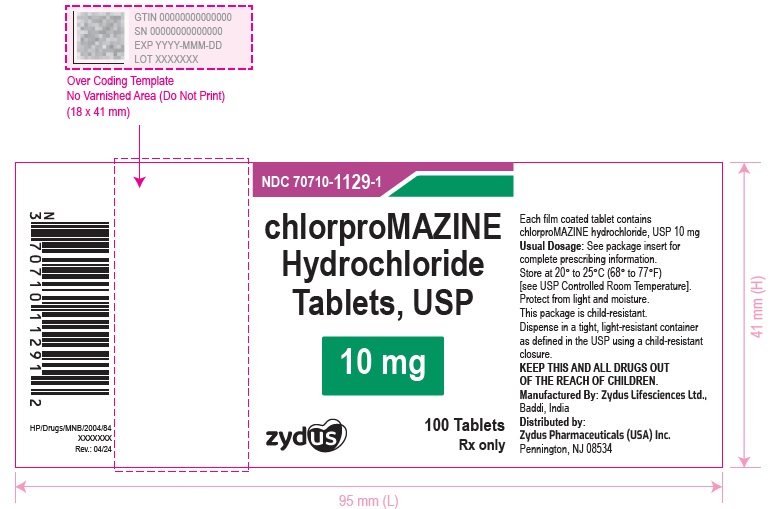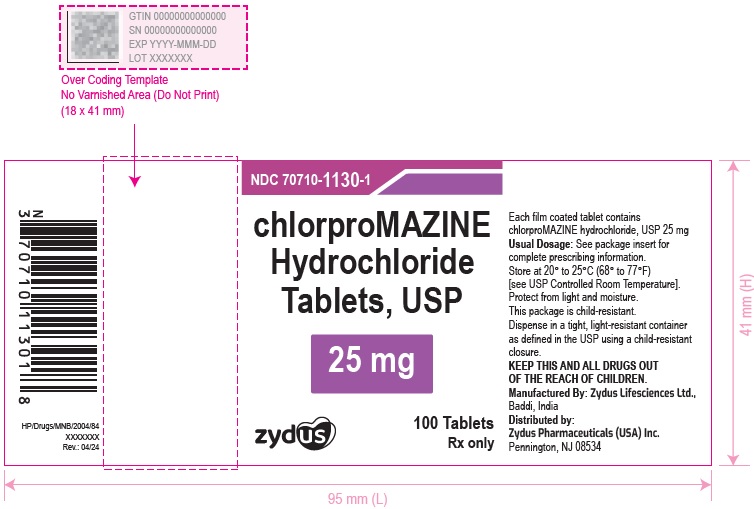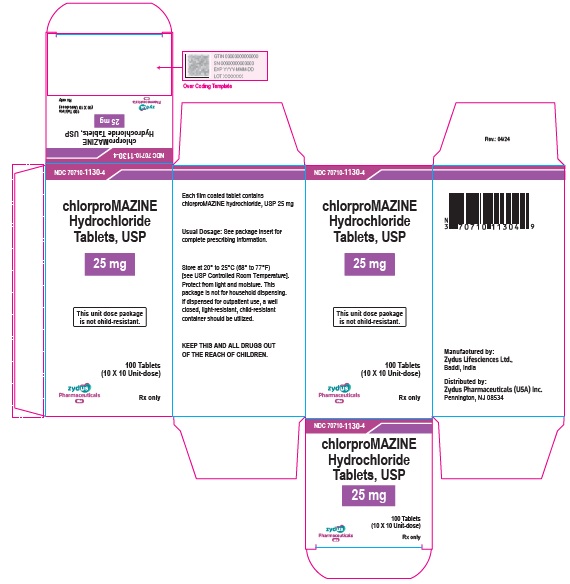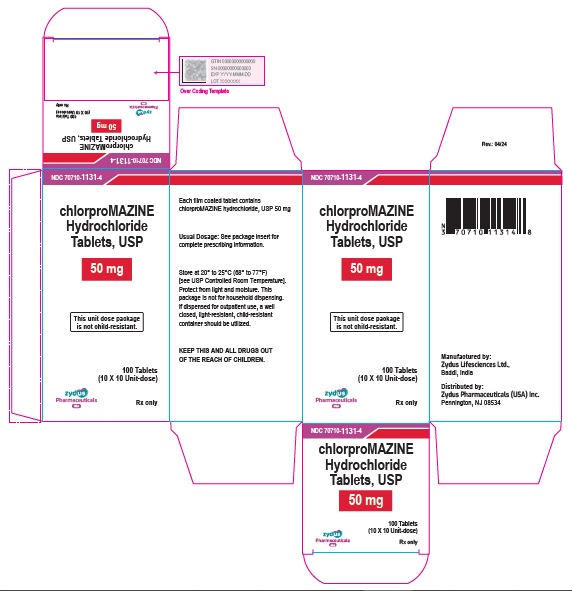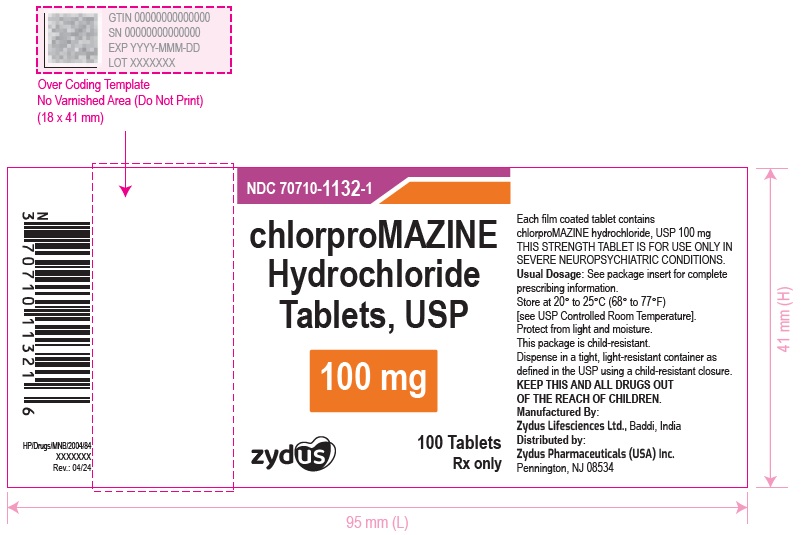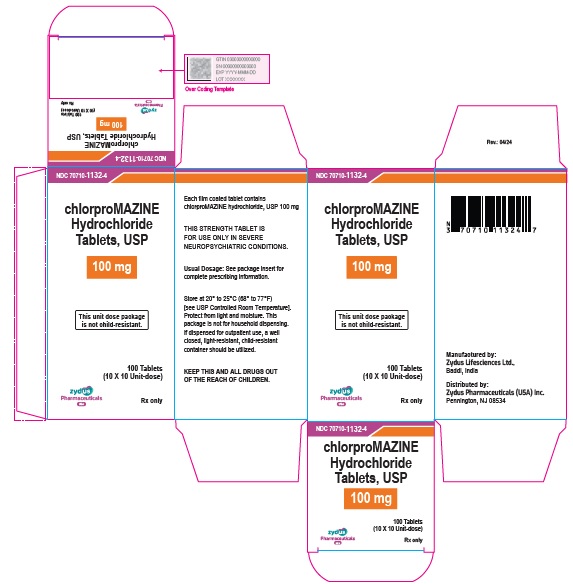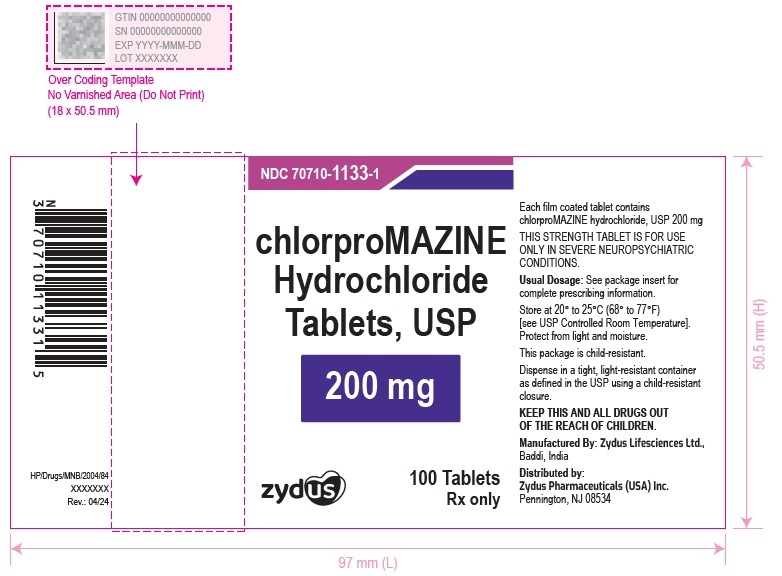Note: Some adverse effects of chlorpromazine may be more likely to occur, or occur with greater intensity, in patients with special medical problems, e.g., patients with mitral insufficiency or ...
Note: Some adverse effects of chlorpromazine may be more likely to occur, or occur with greater intensity, in patients with special medical problems, e.g., patients with mitral insufficiency or pheochromocytoma have experienced severe hypotension following recommended doses.
Drowsiness: Usually mild to moderate, may occur, particularly during the first or second week, after which it generally disappears. If troublesome, dosage may be lowered.
Jaundice: Overall incidence has been low, regardless of indication or dosage. Most investigators conclude it is a sensitivity reaction. Most cases occur between the second and fourth weeks of therapy. The clinical picture resembles infectious hepatitis, with laboratory features of obstructive jaundice, rather than those of parenchymal damage. It is usually promptly reversible on withdrawal of the medication; however, chronic jaundice has been reported.
There is no conclusive evidence that preexisting liver disease makes patients more susceptible to jaundice. Alcoholics with cirrhosis have been successfully treated with chlorpromazine without complications. Nevertheless, the medication should be used cautiously in patients with liver disease. Patients who have experienced jaundice with a phenothiazine should not, if possible, be reexposed to chlorpromazine or other phenothiazines.
If fever with grippe-like symptoms occurs, appropriate liver studies should be conducted. If tests indicate an abnormality, stop treatment.
Liver function tests in jaundice induced by the drug may mimic extrahepatic obstruction; withhold exploratory laparotomy until extrahepatic obstruction is confirmed.
Hematological Disorders: including agranulocytosis, eosinophilia, leukopenia, hemolytic anemia, aplastic anemia, thrombocytopenic purpura and pancytopenia have been reported.
Agranulocytosis – Warn patients to report the sudden appearance of sore throat or other signs of infection. If white blood cell and differential counts indicate cellular depression, stop treatment and start antibiotic and other suitable therapy.
Most cases have occurred between the fourth and tenth weeks of therapy; patients should be watched closely during that period.
Moderate suppression of white blood cells is not an indication for stopping treatment unless accompanied by the symptoms described above.
Cardiovascular:
Hypotensive Effects – Postural hypotension, simple tachycardia, momentary fainting and dizziness may occur rarely, after the first oral dose. Usually recovery is spontaneous and symptoms disappear within ½ to 2 hours. Occasionally, these effects may be more severe and prolonged, producing a shock-like condition.
To control hypotension, place patient in head–low position with legs raised. If a vasoconstrictor is required, norepinephrine and phenylephrine are the most suitable. Other pressor agents, including epinephrine, should not be used as they may cause a paradoxical further lowering of blood pressure.
EKG Changes – particularly nonspecific, usually reversible Q and T wave distortions - have been observed in some patients receiving phenothiazine tranquilizers, including chlorpromazine.
Note: Sudden death, apparently due to cardiac arrest, has been reported.
CNS Reactions:
Extrapyramidal Symptoms – Neuromuscular reactions include dystonias, motor restlessness, pseudo-parkinsonism and tardive dyskinesia, and appear to be dose-related. They are discussed in the following paragraphs:
Dystonia:
Class effect: Symptoms of dystonia, prolonged abnormal contractions of muscle groups, may occur in susceptible individuals during the first few days of treatment. Dystonic symptoms include: spasm of the neck muscles, sometimes progressing to tightness of the throat, swallowing difficulty, difficulty breathing, and/or protrusion of the tongue. While these symptoms can occur at low doses, they occur more frequently and with greater severity with high potency and at higher doses of first generation antipsychotic drugs. An elevated risk of acute dystonia is observed in males and younger age groups.
Motor Restlessness: Symptoms may include agitation or jitteriness and sometimes insomnia. These symptoms often disappear spontaneously. At times these symptoms may be similar to the original neurotic or psychotic symptoms. Dosage should not be increased until these side effects have subsided.
If these symptoms become too troublesome, they can usually be controlled by a reduction of dosage or change of drug. Treatment with anti–parkinsonian agents, benzodiazepines or propranolol may be helpful.
Pseudo – parkinsonism: Symptoms may include: mask-like facies, drooling, tremors, pillrolling motion, cogwheel rigidity and shuffling gait. In most cases these symptoms are readily controlled when an anti–parkinsonism agent is administered concomitantly. Anti–parkinsonism agents should be used only when required. Generally, therapy of a few weeks to 2 or 3 months will suffice. After this time patients should be evaluated to determine their need for continued treatment. (Note: Levodopa has not been found effective in antipsychotic–induced pseudo–parkinsonism.) Occasionally, it is necessary to lower the dosage of chlorpromazine or to discontinue the drug.
Tardive Dyskinesia: As with all antipsychotic agents, tardive dyskinesia may appear in some patients on long-term therapy or may appear after drug therapy has been discontinued. The syndrome can also develop, although much less frequently, after relatively brief treatment periods at low doses. This syndrome appears in all age groups. Although its prevalence appears to be highest among elderly patients, especially elderly women, it is impossible to rely upon prevalence estimates to predict at the inception of antipsychotic treatment which patients are likely to develop the syndrome. The symptoms are persistent and in some patients appear to be irreversible. The syndrome is characterized by rhythmical involuntary movements of the tongue, face, mouth or jaw (e.g., protrusion of tongue, puffing of cheeks, puckering of mouth, chewing movements). Sometimes these may be accompanied by involuntary movements of extremities. In rare instances, these involuntary movements of the extremities are the only manifestations of tardive dyskinesia. A variant of tardive dyskinesia, tardive dystonia, has also been described.
There is no known effective treatment for tardive dyskinesia; anti-parkinsonism agents do not alleviate the symptoms of this syndrome. If clinically feasible, it is suggested that all antipsychotic agents be discontinued if these symptoms appear. Should it be necessary to reinstitute treatment, or increase the dosage of the agent, or switch to a different antipsychotic agent, the syndrome may be masked.
It has been reported that fine vermicular movements of the tongue may be an early sign of the syndrome and, if the medication is stopped at that time, the syndrome may not develop.
Adverse Behavioral Effects – Psychotic symptoms and catatonic-like states have been reported rarely.
Other CNS Effects – Neuroleptic Malignant Syndrome (NMS) has been reported in association with antipsychotic drugs. (See WARNINGS.)
Cerebral edema has been reported.
Convulsive seizures (petit mal and grand mal) have been reported, particularly in patients with EEG abnormalities or history of such disorders.
Abnormality of the cerebrospinal fluid proteins has also been reported.
Allergic Reactions of a mild urticarial type of photosensitivity are seen. Avoid undue exposure to sun. More severe reactions, including exfoliative dermatitis and toxic epidermal necrolysis (TEN), have been reported occasionally.
Contact dermatitis has been reported in nursing personnel; accordingly, the use of rubber gloves when administering chlorpromazine liquid or injectable is recommended.
In addition, asthma, laryngeal edema, angioneurotic edema and anaphylactoid reactions have been reported.
Endocrine Disorders: Lactation and moderate breast engorgement may occur in females on large doses. If persistent, lower dosage or withdraw drug. False-positive pregnancy tests have been reported, but are less likely to occur when a serum test is used. Amenorrhea and gynecomastia have also been reported. Hyperglycemia, hypoglycemia and glycosuria have been reported.
Autonomic Reactions: Occasional dry mouth; nasal congestion; nausea; obstipation; constipation; adynamic ileus; urinary retention, priapism; miosis and mydriasis, atonic colon, ejaculatory disorders/impotence.
Special Considerations In Long-Term Therapy: Skin pigmentation and ocular changes have occurred in some patients taking substantial doses of chlorpromazine for prolonged periods.
Skin Pigmentation– Rare instances of skin pigmentation have been observed in hospitalized mental patients, primarily females who have received the drug usually for 3 years or more in dosages ranging from 500 mg to 1500 mg daily.
The pigmentary changes, restricted to exposed areas of the body, range from an almost imperceptible darkening of the skin to a slate gray color, sometimes with a violet hue. Histological examination reveals a pigment, chiefly in the dermis, which is probably a melanin-like complex. This pigmentation may fade following discontinuance of the drug.
Ocular Changes – Ocular changes have occurred more frequently than skin pigmentation and have been observed both in pigmented and nonpigmented patients receiving chlorpromazine usually for 2 years or more in dosages of 300 mg daily and higher. Eye changes are characterized by deposition of fine particulate matter in the lens and cornea. In more advanced cases, star-shaped opacities have also been observed in the anterior portion of the lens. The nature of the eye deposits has not yet been determined. A small number of patients with more severe ocular changes have had some visual impairment. In addition to these corneal and lenticular changes, epithelial keratopathy and pigmentary retinopathy have been reported. Reports suggest that the eye lesions may regress after withdrawal of the drug.
Since the occurrence of eye changes seems to be related to dosage levels and/or duration of therapy, it is suggested that long-term patients on moderate to high dosage levels have periodic ocular examinations.
Etiology– Etiology of both of these reactions is not clear, but exposure to light, along with dosage/duration of therapy, appears to be the most significant factor. If either of these reactions is observed, the physician should weigh the benefits of continued therapy against the possible risks and, on the merits of the individual case, determine whether or not to continue present therapy, lower the dosage, or withdraw the drug.
Other Adverse Reactions: Mild fever may occur after large I.M. doses. Hyperpyrexia has been reported. Increases in appetite and weight sometimes occur. Peripheral edema and a systemic lupus erythematosus-like syndrome have been reported.
Note: There have been occasional reports of sudden death in patients receiving phenothiazines. In some cases, the cause appeared to be cardiac arrest or asphyxia due to failure of the cough reflex.
To report SUSPECTED ADVERSE REACTIONS, contact Zydus Pharmaceuticals (USA)
Inc. at 1-877-993-8779 or FDA at 1-800-FDA-1088 or www.fda.gov/medwatch.
Close

